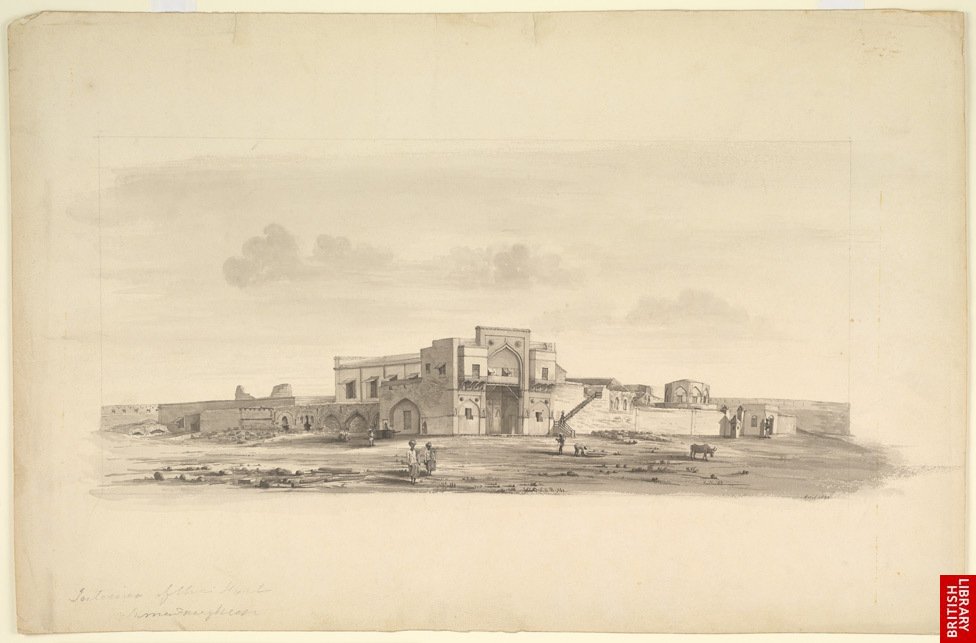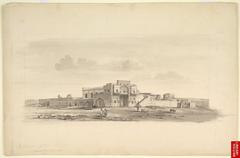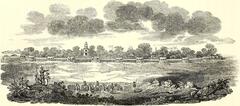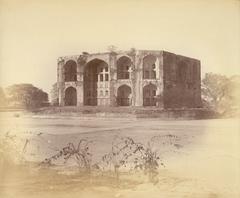
Visiting Bhuikot Killa: A Comprehensive Guide to Ahmednagar’s Historical Gem
Date: 20/07/2024
Introduction
Bhuikot Killa, also known as Ahmednagar Fort, stands as one of India’s most historically significant fortifications. Nestled in the heart of Ahmednagar, Maharashtra, this fort is not just a mere structure but a repository of centuries of history, culture, and architectural ingenuity. Constructed around 1490 by Malik Ahmad Nizam Shah I, the founder of the Nizam Shahi dynasty, Bhuikot Killa served as the capital of the Nizam Shahi Sultanate and a critical military stronghold in the Deccan region. The fort’s robust architecture features high walls, bastions, and a now-defunct moat, reflecting a blend of Islamic and indigenous design elements that symbolize the cultural syncretism of the era (Brittanica) (Maharashtra Tourism).
Over the centuries, Bhuikot Killa has witnessed the rise and fall of various dynasties, including the Mughals, Marathas, and the British. It played a pivotal role during the Mughal era as a key military base and was even used by the British East India Company as a prison for prominent Indian freedom fighters during the struggle for independence. Jawaharlal Nehru, one of the most notable prisoners, wrote a significant portion of his autobiography, ‘The Discovery of India,’ while incarcerated here (Indian Express).
Today, Bhuikot Killa is maintained by the Archaeological Survey of India (ASI) and has been recognized as a site of national importance. Its preservation and restoration efforts are ongoing, ensuring that future generations can continue to appreciate this architectural marvel. The fort attracts numerous tourists, history enthusiasts, and scholars who come to explore its bastions, gates, underground passages, and the museum that houses artifacts from different historical periods. For those planning a visit, this comprehensive guide will cover everything from the fort’s historical significance to practical tips, ensuring a memorable and enriching experience.
Table of Contents
- Introduction
- History and Architectural Significance
- Visitor Information
- Visitor Experience
- FAQ
- Conclusion
History and Architectural Significance
Origins and Early History
Bhuikot Killa traces its origins to the late 15th century, around 1490, when it was constructed by Malik Ahmad Nizam Shah I, the founder of the Nizam Shahi dynasty. Initially built as a mud fort, it was later fortified with stone to withstand invasions and sieges. The fort’s strategic location made it a significant military stronghold in the Deccan region.
Architectural Evolution
The architectural design of Bhuikot Killa reflects the Indo-Islamic style, characterized by robust fortifications, intricate carvings, and strategic defensive structures. The fort covers an area of approximately 1.70 square kilometers and is surrounded by a moat. The fort’s walls are about 25 feet high and 12 feet thick, showcasing the engineering prowess of the time.
One of the notable features of the fort is its 24 bastions, which provided vantage points for archers and artillery. The fort also houses several gates, including the prominent Delhi Gate and Suraj Gate, each adorned with intricate carvings and inscriptions. The fort’s design includes underground tunnels and secret passages, used for escape and communication during sieges.
Role in the Deccan Sultanates
Bhuikot Killa played a pivotal role in the power dynamics of the Deccan Sultanates. It served as the capital of the Nizam Shahi dynasty and was a center of political and military activities. The fort witnessed numerous battles and sieges, particularly during the conflicts between the Nizam Shahi, Adil Shahi, and Mughal empires.
In 1600, the fort was besieged by the Mughal emperor Akbar. Despite a prolonged siege, the fort’s defenders managed to hold off the Mughal forces for several months. However, the fort eventually fell to the Mughals, marking the decline of the Nizam Shahi dynasty.
British Colonial Era
During the British colonial period, Bhuikot Killa continued to hold strategic importance. The British East India Company took control of the fort in the early 19th century. The fort was used as a prison for several prominent leaders of the Indian independence movement. One notable prisoner was Jawaharlal Nehru, who was incarcerated in the fort during the Quit India Movement in 1942. Nehru wrote a significant portion of his autobiography, “The Discovery of India,” while imprisoned in Bhuikot Killa.
Post-Independence Significance
After India gained independence in 1947, Bhuikot Killa was handed over to the Indian government. The fort has since been maintained as a historical monument and is managed by the Archaeological Survey of India (ASI). It has been recognized as a site of national importance and attracts numerous tourists and history enthusiasts.
Preservation and Conservation Efforts
Efforts to preserve and conserve Bhuikot Killa have been ongoing, with the ASI undertaking various restoration projects to maintain the fort’s structural integrity and historical significance. The fort’s walls, gates, and bastions have been reinforced, and measures have been taken to prevent further deterioration due to weathering and human activities.
In recent years, there has been a growing emphasis on promoting the fort as a cultural and educational site. Various events, exhibitions, and guided tours are organized to educate visitors about the fort’s rich history and architectural heritage. The fort also serves as a venue for cultural festivals and historical reenactments, providing a glimpse into the past for contemporary audiences.
Visitor Information
Visiting Hours
The fort is open to visitors from 9:00 AM to 6:00 PM daily.
Ticket Prices
The entry fee is INR 20 for Indian citizens and INR 250 for foreign tourists. Special discounts are available for students and senior citizens.
Guided Tours
Guided tours are available for an additional fee and provide in-depth insights into the fort’s history and architecture. Check with the ticket counter for timings and availability.
Travel Tips
- Footwear: Wear comfortable walking shoes as the fort covers a large area.
- Hydration and Sun Protection: Carry water and sun protection, especially during the summer months.
- Photography: Photography is allowed, so bring your camera to capture the fort’s stunning architecture.
Nearby Attractions
While in Ahmednagar, you can also visit the Ahmednagar Museum, Chand Bibi Palace, and the Shirdi Sai Baba Temple.
Accessibility
The fort has limited accessibility for differently-abled visitors, with some steep and uneven paths. However, efforts are being made to improve accessibility.
Souvenirs and Shopping
There are several shops near the fort where you can purchase souvenirs such as local handicrafts, traditional Maharashtrian attire, and small replicas of the fort. Bargaining is common, so feel free to negotiate the prices.
Emergency Contacts
- Local Police: 100
- Medical Emergency: 108
- Tourist Helpline: 1363 (available in multiple languages)
Visitor Experience
Today, Bhuikot Killa stands as a testament to the region’s rich history and architectural brilliance. Visitors can explore the fort’s various sections, including the bastions, gates, and underground passages. The fort offers panoramic views of the surrounding landscape, providing a sense of the strategic advantage it once held.
For those interested in history, the fort’s museum houses a collection of artifacts, including weapons, manuscripts, and relics from different periods of its history. Informational plaques and guided tours provide insights into the fort’s historical significance and the events that shaped its legacy.
Frequently Asked Questions (FAQ)
- What are the visiting hours for Bhuikot Killa?
- The fort is open daily from 9:00 AM to 6:00 PM.
- How much are the entry tickets?
- The entry fee is INR 20 for Indian citizens and INR 250 for foreign tourists.
- Are guided tours available?
- Yes, guided tours are available for an additional fee.
- What should I wear when visiting the fort?
- Wear comfortable walking shoes and carry water and sun protection.
- Are there any nearby attractions?
- Yes, nearby attractions include the Ahmednagar Museum, Chand Bibi Palace, and Shirdi Sai Baba Temple.
Conclusion
Bhuikot Killa, with its storied past and architectural grandeur, remains a symbol of the region’s historical and cultural heritage. Its preservation and promotion as a tourist destination ensure that future generations can continue to appreciate and learn from this remarkable historical monument. For more detailed information, you can visit the Archaeological Survey of India website.
Stay updated by following us on social media and downloading our mobile app for more information on historical sites and travel tips.





